Caenorhabditis elegans PRMT-7 and PRMT-9 Are Evolutionarily Conserved Protein Arginine Methyltransferases with Distinct Substrate Specificities
- PMID: 28441492
- PMCID: PMC5503151
- DOI: 10.1021/acs.biochem.7b00283
Caenorhabditis elegans PRMT-7 and PRMT-9 Are Evolutionarily Conserved Protein Arginine Methyltransferases with Distinct Substrate Specificities
Abstract
Caenorhabditis elegans protein arginine methyltransferases PRMT-7 and PRMT-9 are two evolutionarily conserved enzymes, with distinct orthologs in plants, invertebrates, and vertebrates. Biochemical characterization of these two enzymes reveals that they share much in common with their mammalian orthologs. C. elegans PRMT-7 produces only monomethylarginine (MMA) and preferentially methylates R-X-R motifs in a broad collection of substrates, including human histone peptides and RG-rich peptides. In addition, the activity of the PRMT-7 enzyme is dependent on temperature, the presence of metal ions, and the reducing agent dithiothreitol. C. elegans PRMT-7 has a substrate specificity and a substrate preference different from those of mammalian PRMT7, and the available X-ray crystal structures of the PRMT7 orthologs show differences in active site architecture. C. elegans PRMT-9, on the other hand, produces symmetric dimethylarginine and MMA on SFTB-2, the conserved C. elegans ortholog of human RNA splicing factor SF3B2, indicating a possible role in the regulation of nematode splicing. In contrast to PRMT-7, C. elegans PRMT-9 appears to be biochemically indistinguishable from its human ortholog.
Conflict of interest statement
The authors declare that they have no conflicts of interest with the contents of this article.
Figures
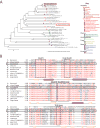
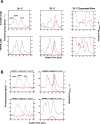


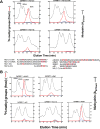

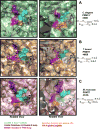
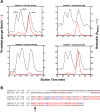

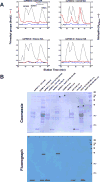
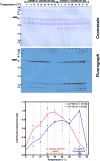

Similar articles
-
PRMT-5 converts monomethylarginines into symmetrical dimethylarginines in Caenorhabditis elegans.J Biochem. 2017 Feb 1;161(2):231-235. doi: 10.1093/jb/mvw066. J Biochem. 2017. PMID: 28173048
-
The C. elegans PRMT-3 possesses a type III protein arginine methyltransferase activity.J Recept Signal Transduct Res. 2011 Apr;31(2):168-72. doi: 10.3109/10799893.2011.555768. J Recept Signal Transduct Res. 2011. PMID: 21385054
-
Unique Features of Human Protein Arginine Methyltransferase 9 (PRMT9) and Its Substrate RNA Splicing Factor SF3B2.J Biol Chem. 2015 Jul 3;290(27):16723-43. doi: 10.1074/jbc.M115.659433. Epub 2015 May 15. J Biol Chem. 2015. PMID: 25979344 Free PMC article.
-
Protein arginine methyltransferases: evolution and assessment of their pharmacological and therapeutic potential.Pharmacol Ther. 2007 Jan;113(1):50-87. doi: 10.1016/j.pharmthera.2006.06.007. Epub 2006 Sep 26. Pharmacol Ther. 2007. PMID: 17005254 Review.
-
Evolutionarily conserved protein arginine methyltransferases in non-mammalian animal systems.FEBS J. 2012 Mar;279(6):932-45. doi: 10.1111/j.1742-4658.2012.08490.x. Epub 2012 Feb 10. FEBS J. 2012. PMID: 22251447 Review.
Cited by
-
Intricate Effects of α-Amino and Lysine Modifications on Arginine Methylation of the N-Terminal Tail of Histone H4.Biochemistry. 2017 Jul 18;56(28):3539-3548. doi: 10.1021/acs.biochem.7b00450. Epub 2017 Jul 7. Biochemistry. 2017. PMID: 28644004 Free PMC article.
-
Protein arginine methyltransferases in protozoan parasites.Parasitology. 2022 Apr;149(4):427-435. doi: 10.1017/S0031182021002043. Epub 2021 Dec 6. Parasitology. 2022. PMID: 35331350 Free PMC article. Review.
-
PRMT7 as a unique member of the protein arginine methyltransferase family: A review.Arch Biochem Biophys. 2019 Apr 15;665:36-45. doi: 10.1016/j.abb.2019.02.014. Epub 2019 Feb 22. Arch Biochem Biophys. 2019. PMID: 30802433 Free PMC article. Review.
-
Mechanisms and Inhibitors of Histone Arginine Methylation.Chem Rec. 2018 Dec;18(12):1792-1807. doi: 10.1002/tcr.201800082. Epub 2018 Sep 19. Chem Rec. 2018. PMID: 30230223 Free PMC article. Review.
-
Chemical probes and methods for the study of protein arginine methylation.RSC Chem Biol. 2023 Jul 28;4(9):647-669. doi: 10.1039/d3cb00018d. eCollection 2023 Aug 30. RSC Chem Biol. 2023. PMID: 37654509 Free PMC article. Review.
References
-
- Wang Y, Wang J, Chen C, Chen Y, Li C. A novel BLAST-Based Relative Distance (BBRD) method can effectively group members of protein arginine methyltransferases and suggest their evolutionary relationship. Mol Phylogenet Evol. 2015;84:101–111. - PubMed
-
- Wang YC, Li C. Evolutionarily conserved protein arginine methyltransferases in non-mammalian animal systems. FEBS J. 2012;279:932–945. - PubMed
Publication types
MeSH terms
Substances
Grants and funding
LinkOut - more resources
Full Text Sources
Other Literature Sources

